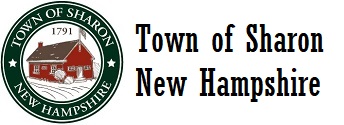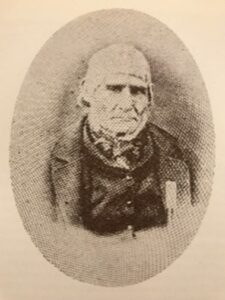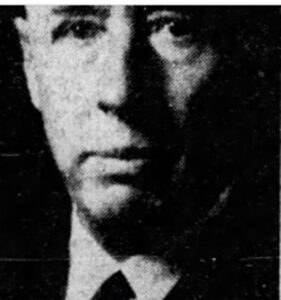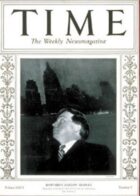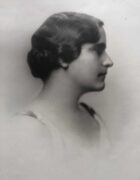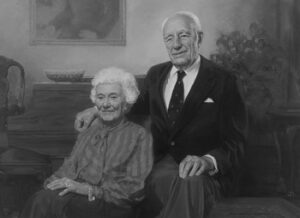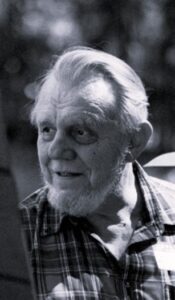Twenty-eight people were posthumously highlighted as ‘Distinguished Citizens’ in The Lost Village, A History of Sharon, New Hampshire. The list of distinguished Sharonites is included here, along with several selected excerpts from the book:
- Reuben Law (See excerpt below)
- Charles Franklin Pierce (See below)
- Dr. Lincoln Davis (See excerpt below)
- Dr. Harlow & Martha (Betz) Shapley (See excerpt below)
- Thomas D. & Virginia (Wellington) Cabot (See excerpt below)
- Dr. Erazim Kohak (See excerpt below)
- Gustavus Swan
- Esther (Taggart) Law
- Herbert Fillmore (H.F.) Nichols
- John A. Taggart
- Harold Wilson
- Lenna (Wilson) Perry
- William LeRoy & Ruth (Crary) Young
- Dr. James Rhyne Killian Jr.
- Herbert Thorn King Jr.
- Ralph H. & Betty (Burke) Wales
- Wallace B. and Violet M. Newton
- John Milton Street
- Donald L. Sullivan
- Abram T. Collier
- Barbara (Wentworth) Wilson
- Dr. Will Fenno
- P.J. O’Rourke
- Charles Franklin Pierce
Charles Franklin Pierce (1844-1920)
Charles Franklin Pierce was born on April 26th, 1844 in Sharon, New Hampshire to John A. and Phila W. Pierce. He was the third of six children who were raised in the nearby rural community of Peterborough. His early years were spent working on the family farm where the pastoral environment and a multitude of livestock made a deep impression on the future artist. Many of the works of art he would create later on in his life would stem from his familiarity with the farming way of life in the mid 1800s. Cows were one of his favorite subjects.
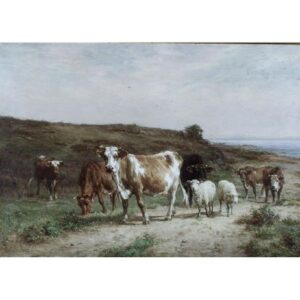
In the early 1860s his creative energies started to emerge and the drudgery of farm work was certainly no outlet for them, so in 1864 he decided to move to Boston to attend art school. Over the next few years he developed his skills at school and in the latter 1860s took his sketchbooks and went to England, Scotland and Wales to sketch the countryside there. This was his first of two prolonged stays in Europe during his lifetime and he honed his craft through his acute attention to detail.
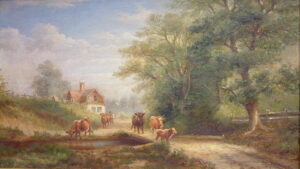
The Early 1870s found Pierce back in Boston where he was a leader in the Boston Art Club and as the country celebrated the centennial of its founding, Pierce married his first wife Luena Wilder of Peterborough who was also an artist of note. They both returned to Europe in the late 1870s and sketched and painted and toured for over a year. They continued to paint both European and New England scenes in a Boston studio and at an estate in Peterborough and after 30 years of marriage Luena died in 1906.
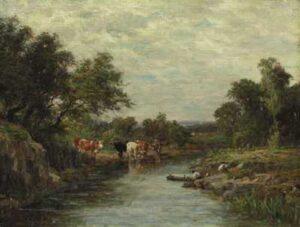
Pierce continued to paint and draw and in 1912, he married Sarah Katherine Plimpton of Massachusetts. They lived on his estate in Peterborough and in Brookline Massachusetts where he died in 1920 on March 5th. In his studio upon his death were found numerous unfinished canvases, which attest to his liveliness right up to his final breath at the age of 67. - Reuben Law
Reuben Law (1751-1840)
Reuben Law, reputed to be the first settler in Sharon, came to town in 1777. Prior to his arrival, he had enlisted as a soldier in the Revolutionary War. He fought at the North Bridge in Concord, Massachusetts where, in 1775, the “shot heard round the world was fired” upon British soldiers. His queue (braid of hair) was shot off at Bunker Hill during the Siege of Boston. He was one of 38 soldiers in the company of Captain Isaac Davis, the first commissioned officer and the first U.S. casualty in the War. Law purportedly earned the rank of Lieutenant.
Law came to the wilderness of Sharon on foot and wearing snowshoes from Acton, Massachusetts dragging his possessions and supplies on a hand-sled. As the story goes, he made camp on the first night, high on a rock, and burned a fire to keep the wolves at bay. He purchased two hundred acres of land in Sharon’s fifth range which is in the vicinity of what is now Mountain Road. Law built a cabin there, fenced the property with stone walls, and eventually built a house.
On January 13, 1778, Reuben Law was married in Acton, Massachusetts by Reverend Moses Adams to Alice (also spelled Allis) Piper. Alice eventually had thirteen children.
Reuben Law and his first wife Alice are both buried in the Jarmany Hill Road Cemetery.
- Dr. Lincoln Davis
After graduating from Harvard and then from Harvard Medical School in 1898, Dr. Davis was immediately appointed as an instructor in anatomy at the medical school.
From 1901 to 1904, he served in Battery A of the Massachusetts Volunteer Militia, a forerunner of the National Guard regiments. In 1917, he was ordered into service in World War I with the Massachusetts General Hospital’s surgical team in France and Italy. He served on the front in field and evacuation hospitals and rose in rank from Major to Lieutenant Colonel. After the Armistice, Dr. Davis returned to France as a commanding officer of Base Hospital 6 until his discharge from active duty in 1919.
Dr. Lincoln Davis became chief surgeon at Massachusetts General Hospital in Boston; he helped run MGH’s Tumor Clinic and was appointed a Trustee of the hospital in 1932.
In World War II during the war emergency years, Dr. Davis came out of retirement to do volunteer duty in the outpatient department at MGH. Also, during his retirement, he was president of the Boston Medical Library.
Dr. Davis often traveled to his simple, one-room cabin in Sharon built in 1929 to relax and to enjoy the quiet. His descendants still own the cabin. In 1945, the nonprofit New England Forestry Foundation accepted its first donated forest, the Lincoln Davis Memorial Forest in Sharon, and made it available to the public.
- Dr. Harlow and Martha Shapley
Dr. Harlow Shapley (1885-1972) and Martha Betz Shapley (1890-1981)
Dr. Harlow Shapley was Director of the Harvard College Observatory for 32 years. During that time (1921-1952), the Observatory became a major research center. Shapley led Harvard to develop as of one of the major astronomy graduate schools in the United States.
His research placed our sun and earth on the outskirts of the Milky Way and proved conclusively that Earth is not located close to the center of our galaxy.
Dr. Shapley was elected to the National Academy of Sciences in 1924 and served as president of the American Association for the Advancement of Science, the American Astronomical Society, the American Academy of Arts and Sciences and Sigma Xi. He held prestigious board positions at organizations including the Woods Hole Oceanographic Institute and M.I.T. Dr. Shapley had a key role in the formation of UNESCO, the United Nations Educational, Scientific and Cultural Organization.
His wife, Martha Betz Shapley, was known as First Lady of the Harvard College Observatory for more than thirty years her husband was its Director. She authored and co-authored fourteen papers on astronomy from 1915 through 1922. They had met in a math class at the University of Missouri where they both graduated.
- Thomas and Virginia Cabot
Thomas Dudley Cabot and Virginia Wellington Cabot (1897-1995 and 1900-1997)
Tom Cabot built a billion-dollar business from holdings in West Virginia Natural Gas, a company which produces carbon black, a substance widely used in making ink, paint, tires and other products.
Tom Cabot taught flying and aerial combat in World War I. In 1944, he chaired a commission to prepare plans for Logan Airport.
An adventurer, he climbed and mapped inaccessible reaches of South America. He sailed to the Caribbean with friends in search of buried treasure.
Cabot endowed a dozen Harvard chairs later in his life and served for years on the governing boards of Harvard, Radcliffe, and M.I.T.
With his wife Virginia, he was among the first to promote downhill skiing and white-water canoeing in the United States. The Grumman Company asked him to design a canoe to be built of aluminum; Cabot’s design is closely followed in most of the canoes sold today.
Virginia was an experienced mountaineer who made the first ascent of Mount Magog in the Canadia Rockies.
The Cabots preserved fifty of Maine’s outer islands and in 1970 helped to form the nonprofit Maine Coast Heritage Trust.
The Cabot’s home in Sharon was named Chalet Rossli, and they considered it their retirement retreat. In 1993 the Cabot Skyline was dedicated by the Friends of the Wapack Trail in honor of Tom Cabot.
The Cabots established the Virginia Wellington Cabot Foundation in 1992. The mission of the Foundation is to benefit mankind through responsible philanthropy, and to inspire, educate, engage, and unify their descendants in making a difference.
In 2001, the Cabot New Hampshire Land Trust placed 211 acres of land in Sharon into permanent conservation easement with the New England Forestry Foundation.
- Dr. Erazim Kohak
Dr. Erazim Kohak (1933-2020)
Erazim Kohak was six years old when Nazis invaded Prague, seven when his father was imprisoned and eleven years old when both his parents were shipped to concentration camps. His mother and father survived, and the family eventually escaped to America.
He studied at Colgate University, earning a B.A. in 1954. Kohak then studied philosophy, theology, and religious studies at Yale University where he earned a masters’ degree in 1957 and a PhD in 1958.
Dr. Kohak worked at Gustavus Adolphus College in Minnesota and at Boston University, where he became a professor in 1977. After the fall of the communist regime, he returned to Czechoslovakia in 1989 to become a professor at Charles University in Prague. From 1990 to 1995 Dr. Kohak alternately taught at the Boston University and Prague’s Charles University.
In 2006, he became a senior research fellow in the Centre of Global Studies in the Institute of Philosophy at the Czech Academy of Sciences in Prague.
Among the many honors Dr. Kohak received was Czechoslovakia’s highest civilian award, the Order of Tomas G. Masaryk, in 2013.
Erazim Kohak loved Sharon and protected 11.8 acres of his land by placing it in permanent conservation easement with the Society of Protection of New Hampshire Forests.
He and his family spent time in a cabin on Swamp Road that Erazim built himself and called “The Swamp,” named partly after the M*A*S*H tent of the same name and its location.
